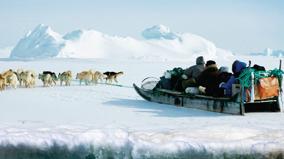Bad Coyote
This short documentary investigates a perceived threat in the rural Maritimes following a deadly coyote attack in the Cape Breton wilderness. Locals react to the attack by concluding that a new super-species is infiltrating their communities: part coyote and part wolf. But is there any truth to this suspicion, or is the response the result of fear and rumours?

Details
-
writerJason Young
-
directorJason Young
-
producerPaul McNeill
-
director of photographyJohn Walker
-
editorAndrew MacCormack
-
original music composerDave Anderson
-
sound designAlex Salter
-
sound recordistAlex Salter
-
camera assistantBecky Parsons
-
additional cameraAndrew MacCormackKyle CameronJeffrey Wheaton
-
additional sound recordistAram KouyoumdjianJon Goodman
-
additional camera assistantGareth RobertsPaul MitcheltreeStéphane Sinclair-FortinEdward McInnes
-
additional editorPatrick Hachey
-
production assistantPeter LeBlancJason GrantDerek Nason
-
assistant editorDavid MullinsLee CrippsJohn FeronChris MacIntoshDaniel CorkumDavid Stewart
-
sound editorAlex SalterBob Melanson
-
music engineerLuke Batiot
-
musicianDan MacCormackMatt Mays
-
rightsElizabeth Klinck Research
-
clearancesElizabeth Klinck Research
-
title designMélanie Bouchard
-
transcriptionConnie LittlefieldErin OakesShelley Fashan
-
production supervisorRoz PowerCandice Desormeaux
-
technical coordinatorSteve HalléJean-François Laprise
-
online editorYannick Carrier
-
coloristYannick Carrier
-
re-recordingSerge Boivin
-
marketing managerKelley Alexander
-
publicistPat Dillon
-
production coordinatorJenna RossTara Taylor
-
senior production coordinatorIsabelle Limoges
-
legal counselStéphanie L'Écuyer
-
studio administratorLeslie Anne PoyntzJohn William Lutz
-
executive producerAnnette ClarkeRavida Din
Education
Analyze the characters’ reactions to the fear generated by Taylor Mitchell’s death. Can these same reactions be seen during other fear-inducing events (a terrorist attack, for example)? Research and discuss what is known about how fear affects humans both physically and cognitively. Does knowing this information change how students view the film’s characters? Examine and discuss how communities try to avoid human-wildlife interactions, such as with grizzly bears.

















